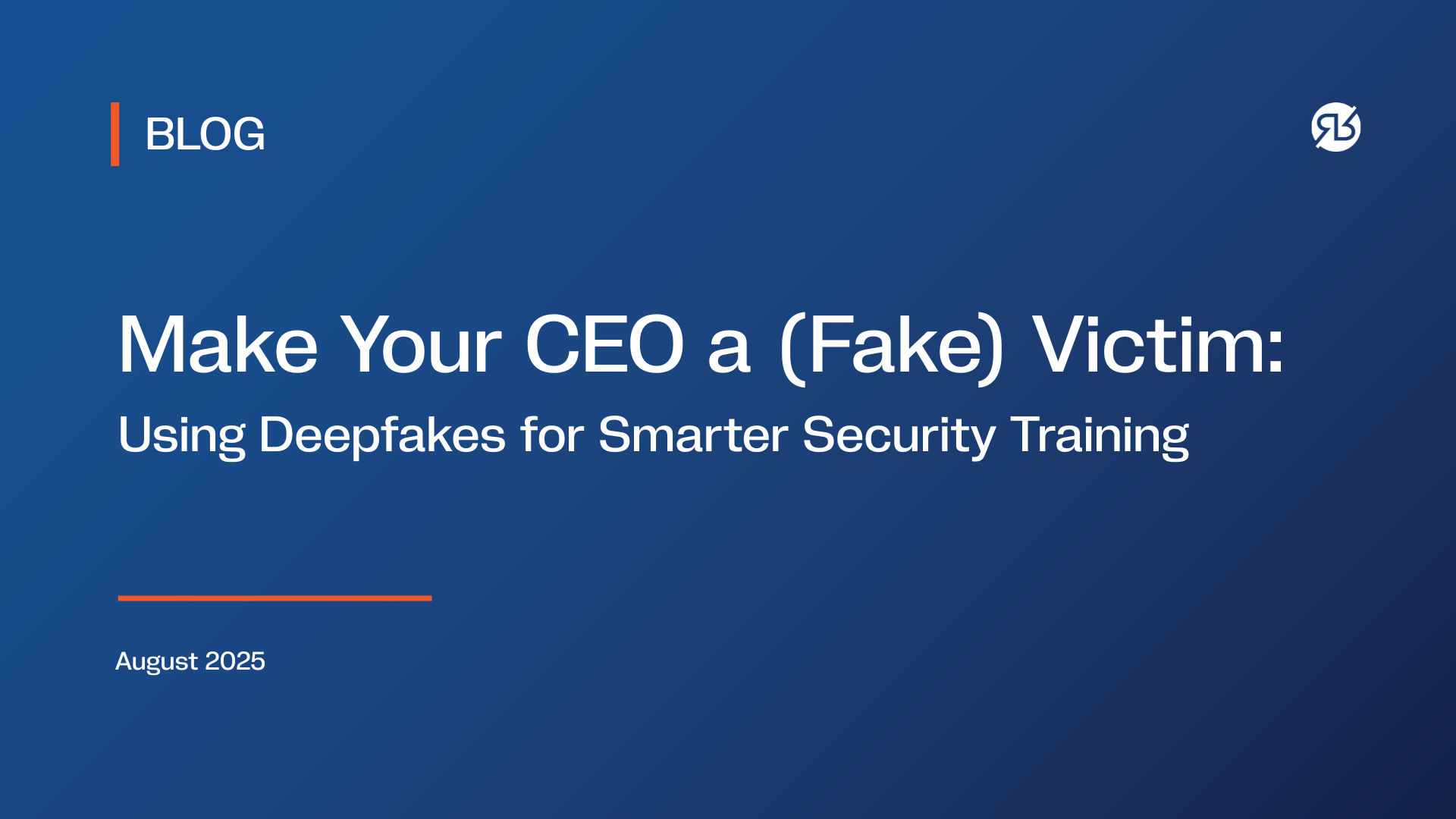Make Your CEO a (Fake) Victim: Using Deepfakes for Smarter Security Training

Make Your CEO a (Fake) Victim: Using Deepfakes for Smarter Security Training
For years, security leaders have tried to make cybersecurity training engaging, only to find themselves running through the same old playbook.
We push out miniature-but-mandatory online courses and quarterly phishing tests, and then wonder why employees roll their eyes. These methods, while certainly good starting points for a security program, don't necessarily change behavior, and they do very little to address emerging threats. In fact, they barely get to the heart of what Human Risk Management (HRM) is all about: building a robust security culture.
But what if you could turn the tables on traditional training and use a cutting-edge threat to engage your entire workforce?
Our deepfake service offering is a prime example of what an innovative HRM program should look like. It’s a creative, realistic campaign that goes far beyond a standard training video. The core of the service is a simulation of a live attack using a deepfake of a company's own executives. The program is designed to show the entire workforce how an attack works, from end to end, using real executives and an internal hero who stops the attack from proceeding.
This approach leverages several key principles that traditional training misses:
- It's Realistic and Relatable: The biggest flaw of generic security training is that it feels distant. It's built for "everyone," which means it's not built for anyone. By using their own leaders, companies make the threat real and immediate. Employees can relate to it and see how it could happens to their company specifically, rather than watching a standardized video.
- It Demands Attention: Imagine your CEO or CFO appearing in a company-wide video as part of a security simulation: people pay attention. The service leverages this surprise factor, as people might not expect their top leadership to be part of something like this. This not only grabs the workforce’s attention but also demonstrates a top-down commitment to security that resonates more than any policy memo. That’s what we call stakeholder buy-in.
- It Builds a Community: A successful HRM program is about bringing preventative strategies into a format and energy that educates folks pre-incident. By showing how the attack is thwarted, it creates a sense of shared purpose and a community spirit around the change that you're trying to drive: protecting the workforce and protecting the company. Skip the generic and show your team that security is everyone’s business.
This deepfake awareness offering isn't just about showing a new threat; it's a dynamic, engaging, and powerful example of how to make security a core part of your company's culture. It’s the ultimate move from a boring, reactionary posture to a proactive, inspiring campaign that truly moves the needle on human risk.
 Aaron Pritz
Aaron Pritz




